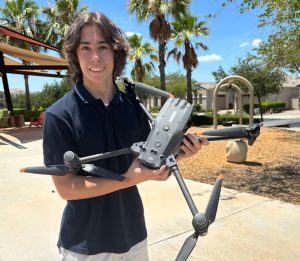Ukrainian Drone Attacks Disrupt Moscow Airspace: Analyzing the Increasing UAV Conflict in 2025
On July 6, 2025, Moscow’s usual aerial noise gave way to a subtler danger: a synchronized Ukrainian drone attack alarmed Russian air defenses, disrupted key airports, and introduced new challenges to the landscape of modern warfare.
The Incident: The High-Stakes Cat-and-Mouse Game in Moscow
That morning, Russian defense systems intercepted and neutralized six Ukrainian drones approaching the capital. Moscow’s Mayor, Sergei Sobyanin, reported that debris was under examination but there were thankfully no casualties or damage. Rosaviatsiya, the civil aviation authority, temporarily closed airports in Moscow and St. Petersburg, leaving passengers at Sheremetyevo Airport stranded for up to nine hours.
The scale extended across Russia, with the Defense Ministry claiming 39 drones were downed over 5.5 hours, and 120 more overnight, largely in central and border areas. Footage and eyewitness reports captured crowded airport lounges with travelers sleeping in terminals, proving the far-reaching impact of even thwarted strikes.
The Technology: The Transformative Power of Drones in Warfare
Long Range, Precision, and Adaptation
While the specific drones used were not detailed, their capacity to travel 1,000 kilometers suggests they are advanced tactical UAVs with satellite-guided navigation and improved endurance. Such capabilities enable Ukrainian forces to target even Moscow, showcasing their strategic military assets.
Russia’s countermeasures have been extensive, utilizing radar-guided surface-to-air missiles and advanced electronic warfare systems. Despite adaptations, airspace closures and ongoing disruptions highlight the challenges current counter-drone strategies face.
The Broader Conflict: Escalation on Ground and Air
Ukrainian Drives to Stratagem
Ukraine’s drone strategy aims to stress Russian logistics and assess defensive effectiveness, bringing psychological and logistical burdens back to Russia. Civilians now face the effects of war directly, as seen in empty venues and halted flights, altering everyday life.
Russia’s Expanding Drone Capability
The escalation is mutual, as Russia intensifies drone production, launching more than 4,000 UAVs monthly at Ukraine with diverse tactical approaches, including the “wolf pack” method and synchronized strikes alongside missile bombardments.
Technical and Strategic Trends in UAV Combat
The Emergence of Deep-Strike Drones
The evolution of military aviation is evident as both nations deploy drones capable of executing deep-strike missions, challenging air supremacy notions. Both sides enhance their UAVs for stealth and counter-jamming, while defenses pursue advanced interceptors and jammers.
The Civilian Impact and Aviation Concerns
The war’s most tangible civilian consequence is on air travel, with frequent airport closures and delays. This disruption extends beyond convenience, underscoring the war’s pervasive impact on civil infrastructure.
Realities on the Ground
- Sheremetyevo Airport: Hundreds of flights delayed, passengers sleeping in terminals, as the conflict reaches Russian civilians directly.
- Local Reports: Moscow buzzes with alarms and emergency sweeps for drone remnants, highlighting a new reality where war’s presence is immediate and personal.
The Human Angle Behind Drone Warfare
The stories of those engaged in this UAV conflict reveal the human cost: engineers improve drone capabilities, air traffic controllers balance safety with service, and stranded families face separation, all due to modern warfare’s intrusion into daily life.
Future Considerations
- Investment Surge: Both Ukraine and Russia accelerate domestic drone innovation, and international collaborations reshape defense sectors.
- Regulatory Shifts: Airspace management requires new protocols for rapid UAV response, with permanent no-fly zones potentially redefining global air travel.
- Global Lessons: The knowledge from this conflict is influencing global military and civil approaches to drone threats, with fortified airports and evolved engagement rules taking precedence.
The advent of drone warfare marks only the beginning over Moscow’s skies, setting the stage for a transformed battle over airspace and the minds of those on the ground.













